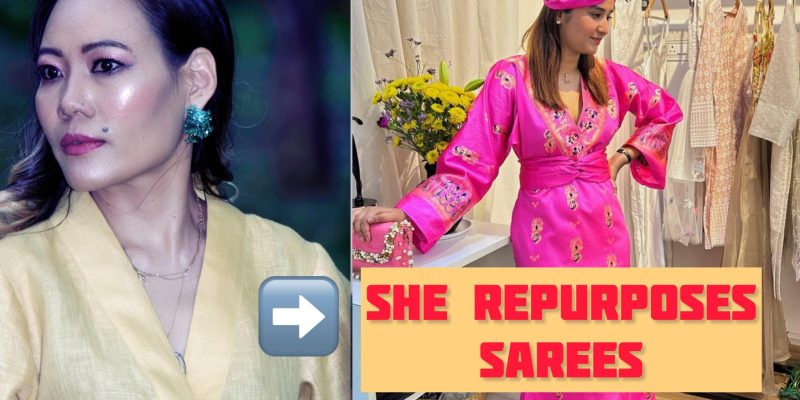In wardrobes across India, neatly folded sarees—some woven in shimmering silks, others soft with age—sit largely untouched. Once worn to weddings, festivals, and family occasions, these garments are often steeped in memory, but out of step with daily modern life.
Now, a quiet transformation is underway. Across design studios and living rooms, these storied textiles are being cut, stitched, and reimagined—not discarded, but reborn as dresses.
Repurposing sarees into contemporary garments is not merely an exercise in craft. It is, increasingly, a thoughtful act of sustainability and storytelling. In a fashion landscape reckoning with waste and excess, the idea that something old can become newly beautiful is resonating more than ever. But this movement is not just about reducing environmental impact—it is also about honoring lineage, identity, and individual creativity.
“When I wore the dress Thanrei made from my saree, it didn’t feel like I was wearing something old,” said Rimpa Roy, a client of designer Thanrei Raising. “It felt like I was carrying a piece of my family’s story—reshaped for my life today.”
Ms. Raising, a designer based in Bangalore, has gained quiet recognition for her ability to merge traditional Indian textiles with contemporary design. Her work is rooted in the principles of slow fashion, often favoring heritage fabrics and hand-finished details over mass-produced gloss. In her collections, repurposed sarees become tailored midis, flowing maxis, or sharply draped gowns—each piece retaining the soul of its original form, yet unmistakably modern.
Her approach is not overly nostalgic. “The idea isn’t to preserve the saree in a glass box,” Ms. Raisings said in an interview. “It’s to let it evolve with you. Clothes are meant to be worn, not just remembered.”
The environmental case for this kind of repurposing is strong. Globally, the fashion industry is responsible for up to 10 percent of carbon emissions and nearly 20 percent of global wastewater, according to the United Nations Environment Programme. In India, where the textile industry is the second-largest polluter after agriculture, the numbers are staggering. The Indian textile sector consumes nearly 1.6 billion liters of water every day and produces 2.7 million tons of textile waste annually—much of it from unused or discarded garments, according to a 2023 study by the Centre for Science and Environment.
At the same time, India is sitting on an enormous untapped resource: sarees themselves. It’s estimated that Indian households collectively store over 6 billion sarees, many of which are used just once or twice, and then set aside indefinitely. By repurposing even a small percentage of these, India could significantly cut down on demand for new textiles and reduce fashion-related waste.
Lightweight georgette or chiffon sarees lend themselves easily to flowing silhouettes—ideal for summer or travel. Heavier silks and brocades are often restructured into evening gowns, jackets, or elegant occasion-wear. Designers are also making clever use of pallus and borders—keeping their visual richness intact as capes, sleeves, or dramatic hems.
For many, this is more than an aesthetic choice. It’s also emotional. “There’s something deeply intimate about wearing a memory,” says Rimpa. “You feel connected, but at ease—it becomes your story too.”
Tailors and homegrown labels across the country are embracing the movement, offering made-to-order transformations from family heirlooms and forgotten sarees. With rising awareness around slow fashion, young consumers—especially urban, environmentally conscious women—are leaning into the idea of owning fewer but more meaningful pieces.
In a time when fast fashion cycles can leave even new clothes feeling disposable, the saree-dress offers a rare kind of longevity—of purpose, of craft, and of meaning.
As Raisings puts it, “Every fold has a past. And every cut can shape the future.”
Thannrei Raising, is based in Bangalore, India and can be reached at +91 7411975437.















Comments